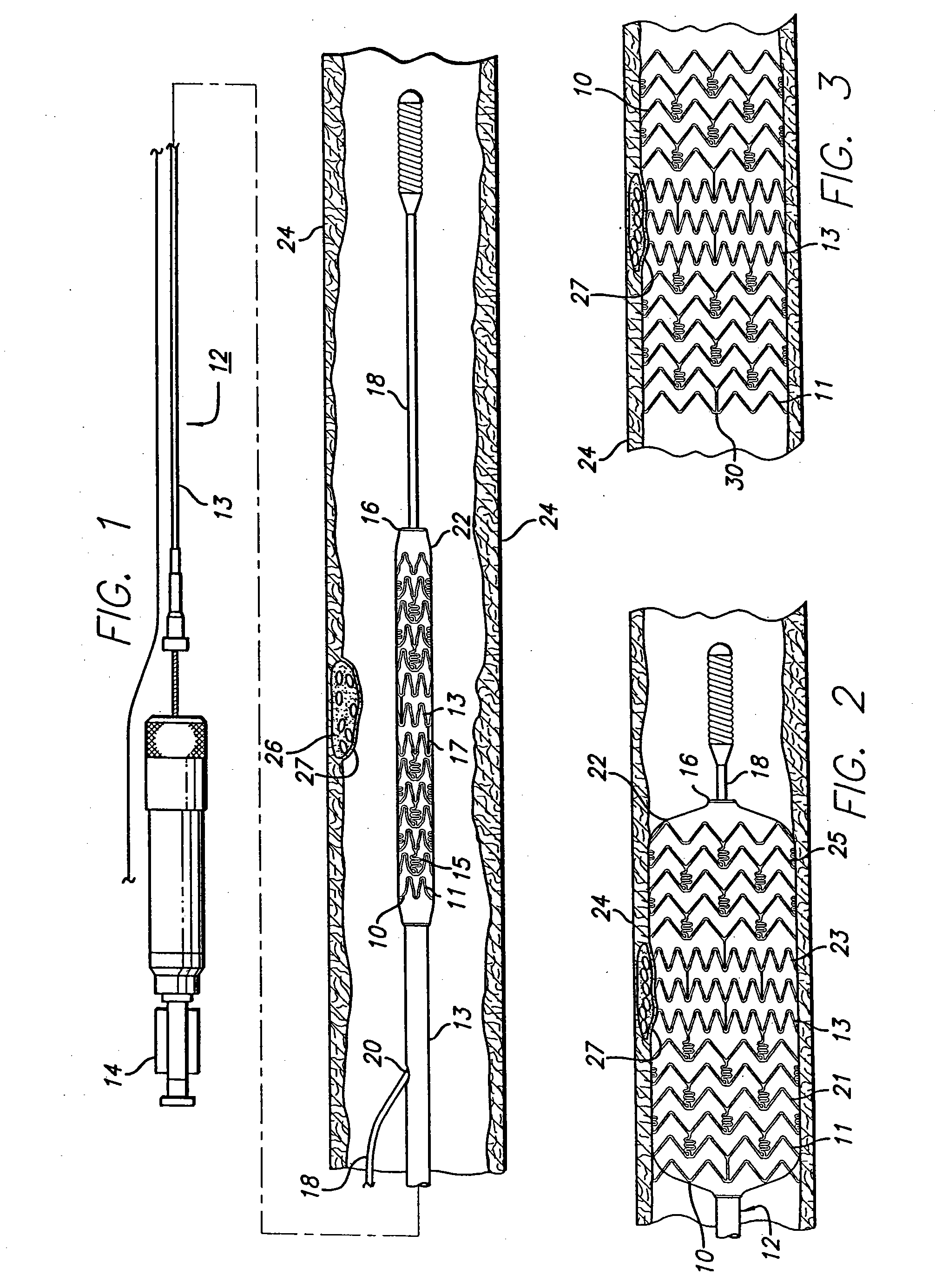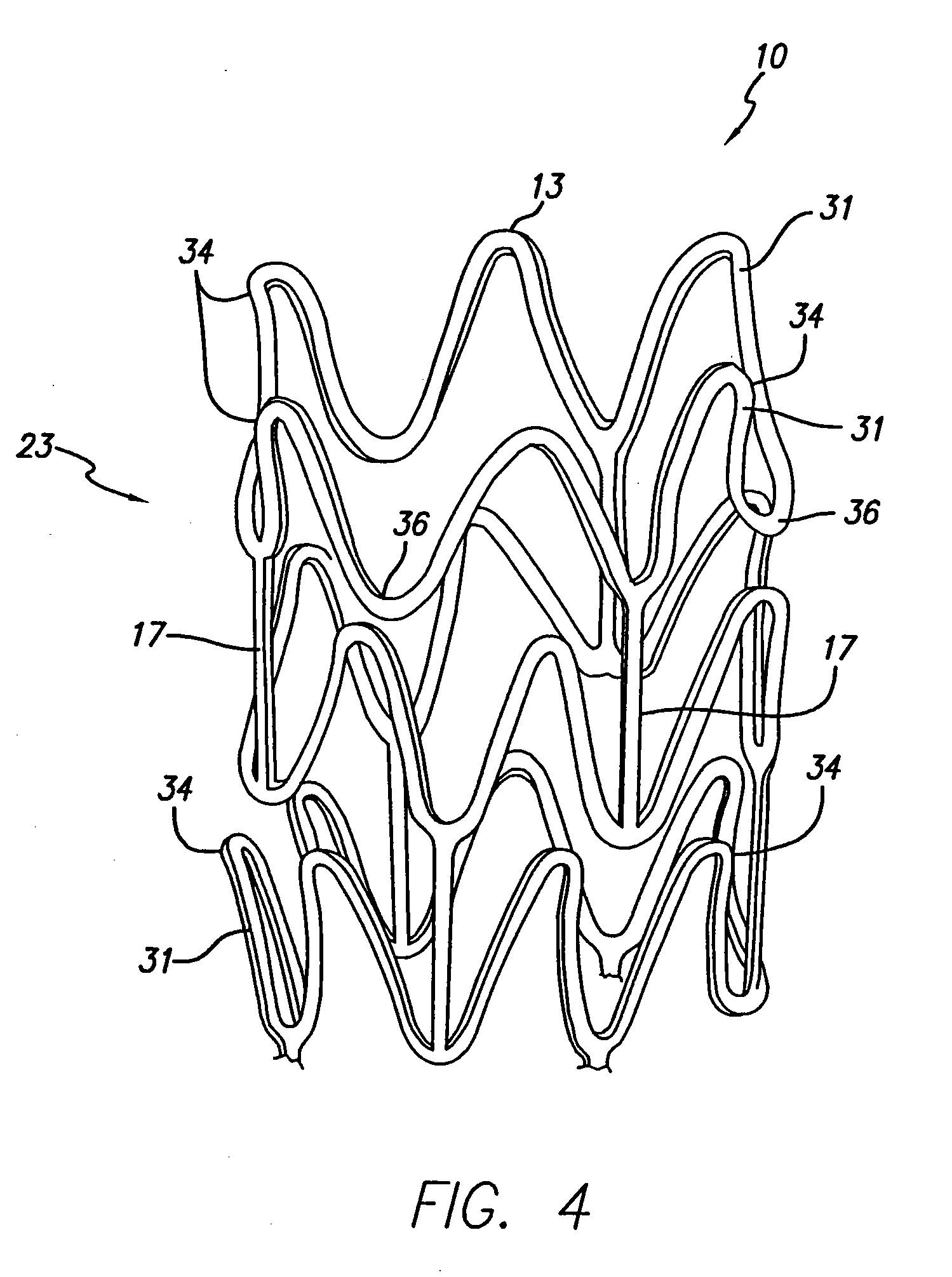Stent for treating vulnerable plaque
a vulnerable plaque and stent technology, applied in the field of vascular repair devices, can solve the problems of less understanding of thrombosis, uncontrollable or vulnerable plaque, and significant therapeutic challenge for medical investigators, and achieve the effect of reducing the stress of the cap
- Summary
- Abstract
- Description
- Claims
- Application Information
AI Technical Summary
Benefits of technology
Problems solved by technology
Method used
Image
Examples
Embodiment Construction
[0050] Before describing in detail an exemplary embodiment of a stent for the treatment of a vulnerable plaque in accordance with the present invention, it is instructive to briefly describe a typical stent implantation procedure and the vascular conditions which are typically treated with stents.
[0051] Turning to the drawings, FIG. 1 depicts a metallic stent 10 incorporating features of the invention mounted on a catheter assembly 12 which is used to deliver the stent and implant it in a body lumen, such as a coronary artery, peripheral artery, or other vessel or lumen within the body. The stent generally includes a plurality of radially expandable cylindrical rings 11,13 disposed generally coaxially and interconnected by undulating links 15 and straight links 17 disposed between adjacent cylindrical rings. The stent as shown in FIG. 2 generally includes distal 21, center 23, and proximal 25 sections. The catheter assembly shown in FIG. 1 includes a catheter shaft 13 which has a p...
PUM
 Login to View More
Login to View More Abstract
Description
Claims
Application Information
 Login to View More
Login to View More - R&D
- Intellectual Property
- Life Sciences
- Materials
- Tech Scout
- Unparalleled Data Quality
- Higher Quality Content
- 60% Fewer Hallucinations
Browse by: Latest US Patents, China's latest patents, Technical Efficacy Thesaurus, Application Domain, Technology Topic, Popular Technical Reports.
© 2025 PatSnap. All rights reserved.Legal|Privacy policy|Modern Slavery Act Transparency Statement|Sitemap|About US| Contact US: help@patsnap.com



